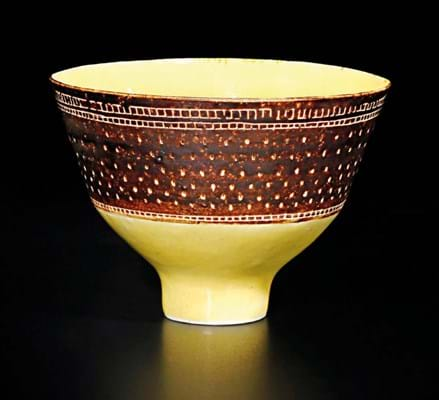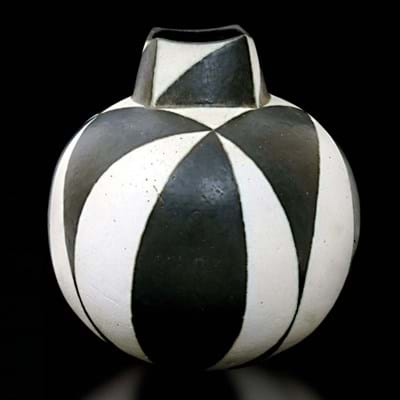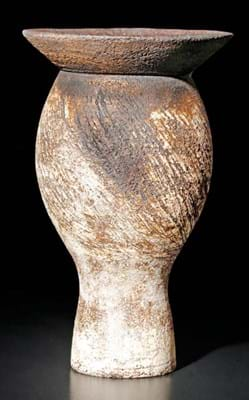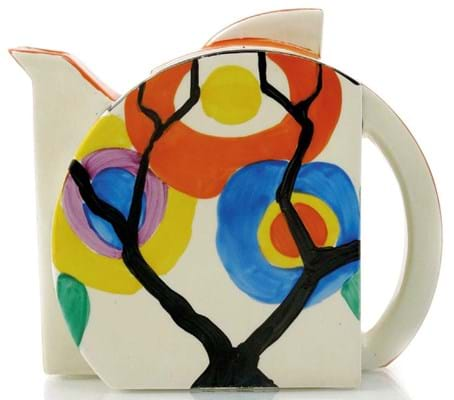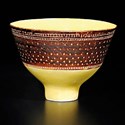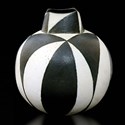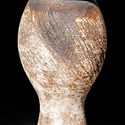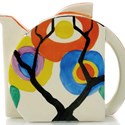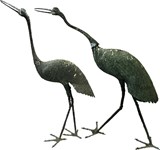They came into sharp focus at the Woolley & Wallis (22% buyer’s premium) March 29 sale when three examples contributed £61,000 to the £213,000 hammer total.
Pieces by Dame Lucie Rie (1902-95) and associate Hans Coper (1920-82) – the doyenne and doyen of the movement – and rising name John Ward (b.1938) all generated five-figure sums in the 430-lot Salisbury auction. International interest was evident but all in the end went to private UK buyers.
At W&W, which has been a strong player in the field, specialist Michael Jeffery has seen interest rising for some time.
However, he said: “The market really took off only four years ago.” That was when records for Rie began to tumble.
In 2013 her conical c.1982 vase made $65,000 (then £42,000) at Phillips in New York; in December 2014, a flared bowl took £47,000 at W&W; in October 2015 a 1976 conical bowl went at £85,000 at Phillips’ London rooms. Then, last December, Phillips New York set a new high with a triple-estimate $170,000 (then £134,000) for a c.1978 flaring footed bowl.
Underlying strength
The prizes at W&W’s March sale were never likely to reach these sums but underlined the market’s base.
Top seller was a piece by Rie, a small and early porcelain bowl of flaring footed form. With a yellow glaze to the foot and interior and a broad band of manganese, it was sgraffito decorated with dots and borders and carried an impressed seal mark.
Standing just 3in (7.5cm) it was estimated at £6000-10,000 and sold at £30,000.
Rie now shares equal financial footing with Coper. After his death, Rie said of him: “I am a potter, but he was an artist.”
Last August his importance was emphasised when the V&A bought a large 1955 Coper bowl for £92,000 after it had been subject to a temporary export ban in 2015.
The Coper lot at Salisbury was a 6in (15cm) stoneware thistle-form vase with textured body with manganese and white slip highlights.
Bought directly from Rie’s Albion Mews studio c.1958, it was estimated at £3000-5000 and sold at £19,000.
John Ward was influenced by both Rie and Coper, who taught at Camberwell Arts when he studied ceramics there in 1966-70. Since 1975 he has worked in Wales, building a fine reputation among the cognoscenti, but is now entering the major price league. In 2000, Bonhams sold one of his hand-built stoneware vases, an ovoid with a tapering square neck and decorated with black and white irregular panels, for £400 hammer.
That same 10¼in (26cm) tall vase with impressed seal was estimated at £2000 at the Salisbury sale. It sold at £12,000.
“John Ward is the next generation for buyers,” said Jeffery.
“There is a young market – there are some very rich young people – but it’s not exclusively the young. Older people do buy and sell, and we meet people who bought direct from Lucie Rie’s studio.”
Budget options
Entry-level items still appear for collectors on budgets, such as a simple pourer with a pulled side handle by Rie.
Stoneware rather than porcelain, small at 3¼in (8.5cm) and quite plain with an off-white glaze and pale celadon interior, it was estimated at £300-500 and made £800. Jeffery said: “A collector could still also buy, say, a cup by Rie or Coper for around £600-800.”
A different market also exists for studio pottery by famous names such as Bernard Leach, but Jeffery expects the next wave of moderns to see major price rises to include the likes of Gordon Baldwin (b.1932), Ewan Henderson (1934-2000), Walter Keeler (b.1942) and Jennifer Lee (b.1958).
All sell well at galleries and Lee, in particular, has an international following. But their works are seldom offered on the secondary market.
As Ward’s fame rises, pieces are coming to auction with more regularity.
Size and condition are, naturally, key factors in price, but decoration is what makes the difference. The signature black and white decoration is particularly desirable.
Two of Ward’s smaller handbuilt stoneware vases at W&W were a 6¾in (17.5cm) matt white example with turquoise splashes which made £1900 (estimate £250-300) and a 5½in (14cm) tall, pale blue one with an elliptical section at £850 (estimate £150-200).
The Salisbury sale, by tradition, was billed as Clarice Cliff, Art Deco & Design, and Clarice did make her mark as early as the second lot. A Circle Tree teapot and cover from the Stamford Bizarre range made £1800 against an £800-1200 estimate.
Among the affordable pieces Jeffery picked out as of interest was one by a designer who influenced Clarice.
The Hael ceramics workshops established by Margaret (Grete) Heyman Lobenstein (1899-1990) and her husband Gustav in 1923 were a significant name in the Bauhaus movement. Gustav died in a car crash in 1928. In 1936 Margaret (like Coper later) fled from Nazi Germany to London where she worked for Heal’s and Minton.
Her name faded, to be remembered only occasionally when a piece appears at auction such as the Modernist pottery tea set offered at W&W.
With stamped marks and the GHL monogram, the conical form teapot, milk jug and sugar basin with pastille handles, and three cups, saucers and side plates, were estimated at £200-400 and sold at £500.


